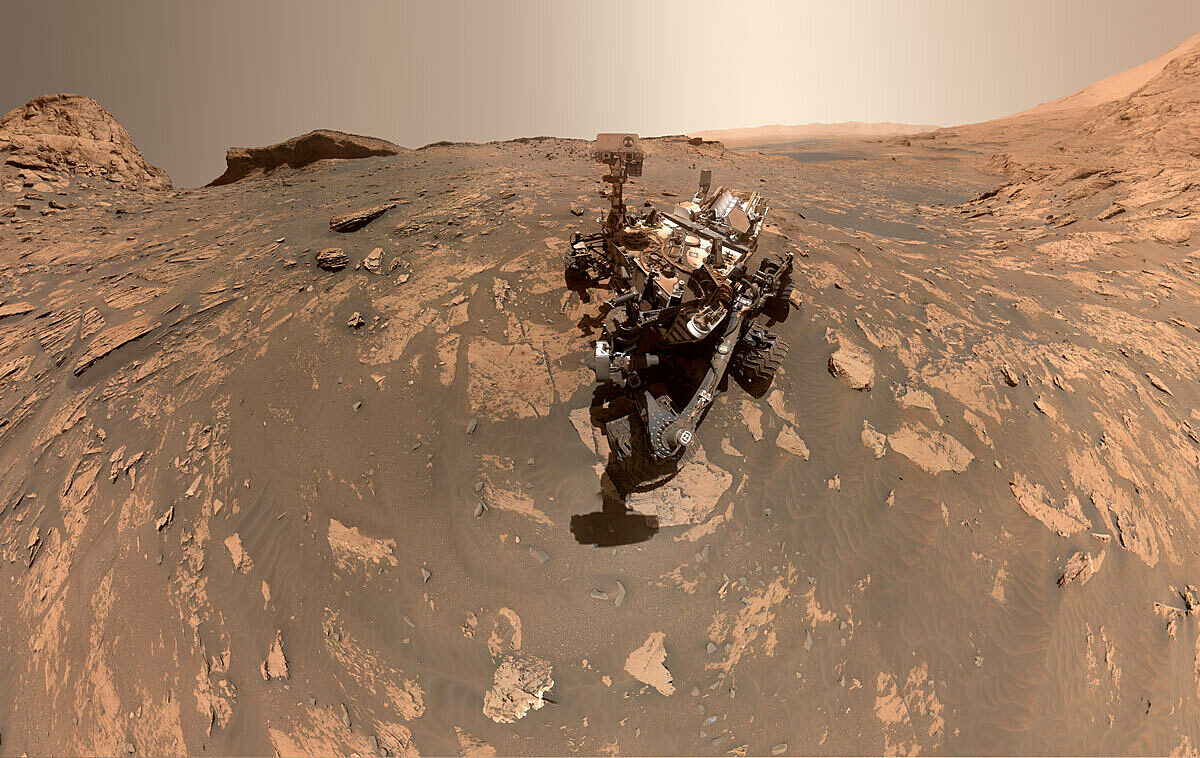The Downlink • Aug 05, 2022
Rather remarkable robots
Space Snapshot

NASA’s Curiosity rover has been on Mars for a decade today. Within the first year of its mission it accomplished its primary goal: finding evidence that the Gale Crater in which it landed once held a lake of liquid water, with conditions that could have been hospitable to life. Ten years later it’s still exploring Mars and making discoveries, with no indication its work will end anytime soon. Curiosity took this selfie in November 2021, along with a wide-angle version that showcases its surroundings near the base of Mount Sharp. Image credit: NASA/JPL-Caltech.
You love space, now take action
This weekly newsletter is your toolkit to learn more about space, share information with your friends and family, and take direct action to support exploration. Anyone can subscribe at planetary.org/connect to receive it as a weekly email.
Mission Briefings


NASA and ESA are planning to return Mars samples to Earth by 2033. The agencies announced this week that their Mars Sample Return campaign has been simplified thanks to the impressive performance of the Perseverance rover. A sample retrieval lander will arrive on Mars in 2028, but the plans no longer require a new rover to fetch samples and return them to the lander. Instead, Perseverance will shuttle the samples, with the help of two sample recovery helicopters that will accompany the lander. Pictured: An illustration of the team of robots that will be involved in Mars Sample Return. Image credit: NASA/JPL-Caltech.

The U.S. Senate’s 2023 NASA budget is looking good. The budget proposes a $1.9 billion increase over the prior year, matching the President's top-line request. It supported many of The Planetary Society's top priorities, including full funding for Mars Sample Return, Europa Clipper, and public-private partnerships for human lunar exploration. It restored $40 million to NEO Surveyor, which NASA proposed to slash by 75%. This represents progress, though does not solve the funding problem facing this critical program. Learn more about NASA’s FY 2023 budget.

JWST may have already broken its own record for oldest galaxy ever detected. Just one week after finding a galaxy 13.5 billion light-years away, NASA’s new space telescope may have spotted an even more distant, and therefore even older galaxy. Named CEERS-93316, this galaxy appears as it existed just 235 million years after the Big Bang. This discovery still needs to be confirmed by studying the spectra of the galaxy’s light.

Jaw-dropping JWST pics just keep on coming. The Space Telescope Science Institute recently shared a new image showing “spokes” of gas feeding into the black hole at the center of the Cartwheel Galaxy.
From The Planetary Society


Can you help spot Martian clouds? A team from NASA’s Jet Propulsion Lab is leading a citizen science project to look for water-ice clouds and carbon-dioxide clouds at very high altitudes in the Martian atmosphere. Participants spot clouds by looking for arches (such as the one pictured) in data collected by the Mars Reconnaissance Orbiter’s Mars Climate Sounder instrument. Learn more about the project in this week’s Planetary Radio. Image credit: NASA/JPL-Caltech.

The rocket that will return astronauts to the Moon has an interesting backstory. A product of congressional interests with a history of serious cost overruns and schedule delays, the Space Launch System (SLS) will nevertheless serve an important role in the future of exploration. Learn more about how this rocket came to be and what you can expect from it in years to come.

Two Planetary Society members won big! Gold and platinum prizes in a contest run by Planetary Society partner Lunar were both won by members of The Planetary Society. One winner will get to meet with Planetary Society CEO Bill Nye at our headquarters in California, and the other will get a zero-gravity experience on a parabolic flight.
What's Up

Saturn rises in the east in the early evening this week, followed by Jupiter a couple of hours later. Mars rises after midnight, with Uranus nearby visible as a little blue dot through binoculars. Venus joins the planet party in the pre-dawn. Next Friday’s supermoon will be beautiful, although it may make it harder to see meteors from the Perseid shower, which peaks that day. Get the full scoop on what to look for in the August night sky.
Get first dibs on a JWST poster

The Planetary Society’s longtime partner ChopShop makes all the awesome merch in our online store, and they’re working on a new series of posters featuring space telescopes, including JWST. To get this series off the ground ChopShop has launched a Kickstarter campaign. Backers can get first access to the poster, as well as other rewards.
Wow of the Week

Neptune’s moon Triton is as beautiful as it is mysterious. This image of the icy world was created using photos taken by NASA’s Voyager 2 spacecraft as it passed by in 1989. Voyager 2 is the only spacecraft to have ever visited the Neptune system, which it did after having already studied Jupiter, Saturn, Uranus, and many of their moons. Image credit: NASA/JPL.
Send us your artwork!
We love to feature space artwork in the Downlink. If you create any kind of space-related art, we invite you to send it to us by replying to any Downlink email or writing to [email protected]. Please let us know in your email if you’re a Planetary Society member!


 Explore Worlds
Explore Worlds Find Life
Find Life Defend Earth
Defend Earth


